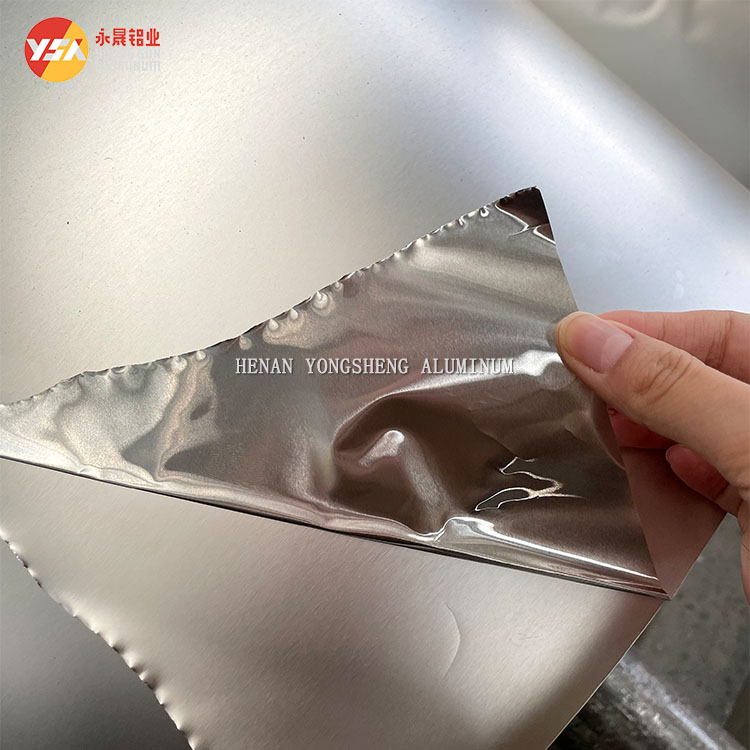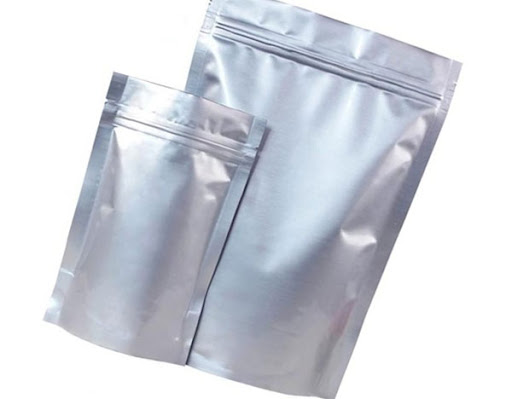Folha de alumínio bags are essential packaging materials known for their excellent moisture barrier, oxygen barrier, and light-blocking properties. They are widely used in food packaging, pharmaceutical packaging, and various industrial applications. Understanding the production process of aluminum foil bags helps us appreciate the technology and craftsmanship behind these high-performance products.
Material Selection
The primary material for aluminum foil bags is aluminum foil. High-quality aluminum foil is crucial for ensuring optimal performance in moisture protection, flexibility, and manufacturability. Many aluminum foil bags are also made from composite materials, such as polyethylene (PE) or polypropylene (PP), which enhance durability and sealability.

Production of Aluminum
The production of aluminum begins with the extraction of bauxite, which is refined to produce aluminum oxide. This is then electrolyzed to create aluminum ingots. After the aluminum ingots are produced, they undergo melting and rolling processes to form thin aluminum foil. During rolling, the aluminum ingots are heated and passed through multiple rollers to reduce their thickness to between 0.01 and 0.2 millimeters. This process ensures that the aluminum foil has the necessary flexibility and mechanical strength for further processing.
Manufacturing Aluminum Foil Bags
The process of creating aluminum foil bags is intricate and precise, consisting of several key steps:
– Cutting Aluminum Foil: The produced aluminum foil is cut into specific dimensions based on the required size of the final bag.
– Lamination: Aluminum foil bags are typically made from multiple layers of materials. The aluminum foil is laminated with plastic films to improve strength, sealability, and protective properties. Lamination can be achieved through heat-pressing or using safe adhesives, enhancing durability and aesthetic appeal.
– Printing: The surface of the aluminum foil bags is printed with designs and text using food-safe inks, ensuring that no harmful substances are emitted when in contact with food. Common printing methods include gravure and flexographic printing, with gravure printing suitable for large-scale production and flexographic printing being more versatile for smaller batches.
– Shaping and Sealing: The cut aluminum foil is formed into bags using thermal sealing or cold sealing techniques. Thermal sealing uses high temperature to bond materials, while cold sealing utilizes adhesives. Ensuring a tight seal is crucial for maintaining product freshness and safety.
Quality Inspection
Quality inspection is an essential step in the aluminum foil bag production process, ensuring that every product meets industry standards. Key inspection areas include:
– Thickness Measurement: Precise instruments measure the foil’s thickness to confirm it falls within specified ranges, ensuring adequate protective performance.
– Seal Integrity Testing: The seals of the bags are rigorously tested to ensure there are no leaks, which directly affects the freshness and safety of the food.
– Print Quality Evaluation: The printed designs are checked for clarity and lack of defects such as tearing, blurring, or fading, maintaining product aesthetics and brand identity.
Final Packaging and Shipping
Once the aluminum foil bags pass all quality checks, they are packaged as finished products. To prevent damage during shipping and storage, appropriate protective materials are used to ensure that each bag arrives in optimal condition. Before shipping, companies carefully verify shipping documents and compliance to ensure timely and safe delivery to customers.

Future Technologies and Innovations
As technology advances, the production processes of aluminum foil bags continue to innovate. For example, nanoscale materials are being researched to enhance food preservation, and biodegradable aluminum foil bags are being developed to meet modern environmental demands. Smart packaging technology is also being integrated, such as embedding sensors to monitor food freshness.
Conclusão
The production of aluminum foil bags encompasses multiple stages, from material selection to final packaging, with each step significantly impacting product quality. Understanding this process deepens our appreciation for the manufacturing of aluminum foil bags and highlights the importance of sustainable packaging solutions. As technology evolves, the functionality and environmental capabilities of aluminum foil bags will further enhance, providing better options for food and product packaging in the future.


